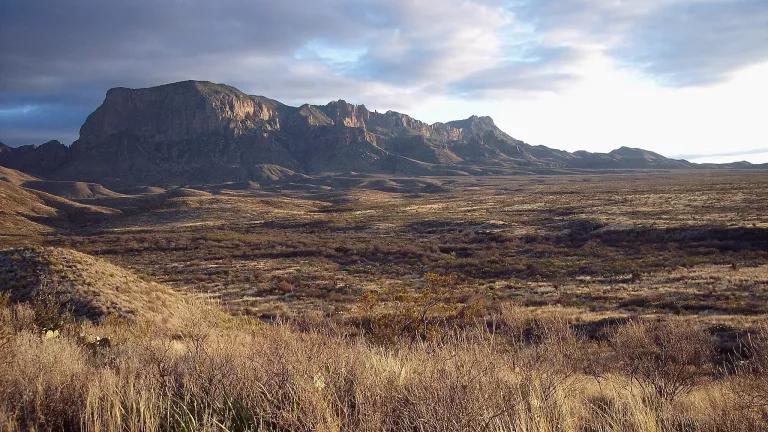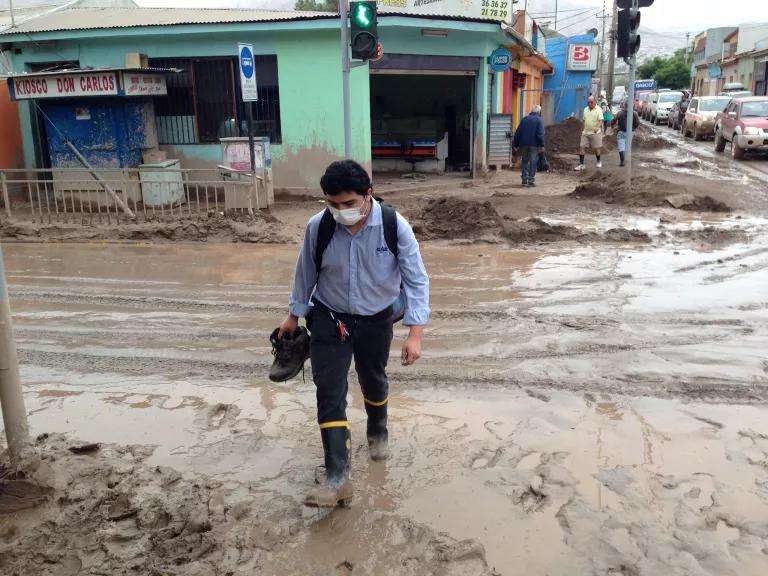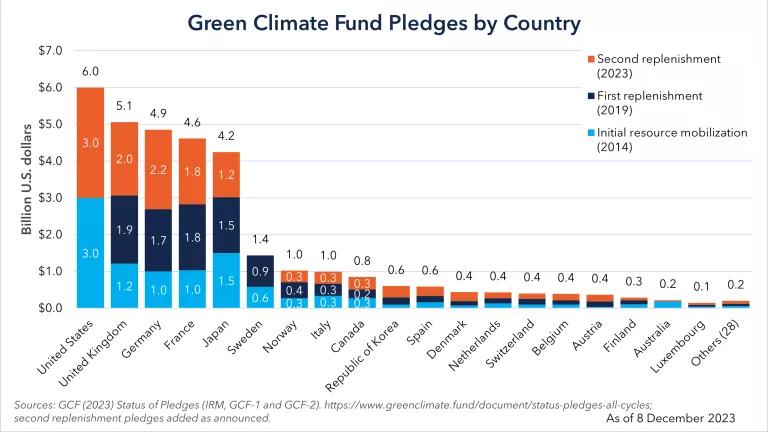5 Reasons Nature Will Help Solve the Global Climate Crisis

Adbar / Wikimedia Commons
This post was written by Andrea Becerra.
We often take nature for granted. The very air we breathe is a by-product of trees transforming carbon into oxygen via photosynthesis. Trees even help remove harmful particulate matter (PM2.5) pollution. Pollinators like bees, bats, and butterflies provide the food on our table—approximately one of every three bites of food in the U.S. diet is a result of bee pollination. And, finally, the particles, microbes, and chemical charge present in healthy soils can help remove metals, chemicals, and other pollutants from our freshwater sources. Some microbes found in soil have even been found to transform crude oil into non-toxic substances. Nature is a true force to be reckoned with and a very capable ally in the fight against climate change.
Unfortunately, we’re not giving nature the room it needs to do its work. A series of back-to-back reports this year have affirmed and re-affirmed that the planet is nearing several tipping points that could unleash irreversible harm to our planet, people, and animals. As UN Secretary General António Guterres put it, we are nearing the “point of no return,” and part of reversing course will be halting “our war against nature.”
We have compiled a list of five reasons why nature-based solutions like conservation, restoration, and green infrastructure should be a central theme of efforts to address global climate change (at the COP25 and beyond!).
1. Nature fixes our bad habits
Most of us know by now that carbon dioxide is one of the greatest foes in our fight against climate change. This heat-trapping greenhouse gas (GHG) is one of the main contributors to climate change. And while reducing global carbon emissions by accelerating the transition to renewable energy resources like wind and solar or expanding clean transportation initiatives is key, preserving nature’s carbon sink capabilities is also a critical tool. From grasslands to our oceans, nature works wonders to correct our bad habits. Globally, grasslands absorb approximately 343 gigatons of carbon dioxide, or about 19 percent of carbon dioxide emissions from the U.S. electric power sector. Protecting our oceans is also central to nature-based solutions. Like grasslands, our oceans absorb carbon dioxide—one quarter of all the CO2 we currently generate to be exact. Oceans also help regulate our climate by absorbing a lot of the extra heat we produce—a whopping 93 percent of excess heat since 1970. A recent study claims that nature-based solutions, including conservation and better land-use practices, can contribute up to 37 percent of the emission reductions needed by 2030 to keep global temperature increases below 2 degrees Celsius.
2. Protects our planet’s increasingly vulnerable biodiversity
Our land and ocean can only do so much to mitigate our climate if humans don’t protect it. And as our planet’s natural areas suffer, so do entire ecosystems. A grim report by the UN recently warned that over one million species of plants and animals are in danger of extinction. Phytoplankton made earth a breathable planet 500 million years ago. But even this ancient species can’t take the heat. New evidence reveals that phytoplankton productivity, the very base of the ocean’s food chain, has declined steadily since the industrial revolution, coinciding with the rise in surface temperature. In addition to human-caused temperature rise, overfishing, unsustainable wildlife trade, and deforestation are all taking a toll on the planet. Since 1970, the planet’s vertebrae population has declined by 60 percent, nearly 33 percent of reef forming corals, sharks, and shark relatives are currently threatened with extinction, and the world lost 502,000 square miles (1.3 million square kilometers) of forest between 1990 and 2016. Well-managed protected areas have proven effective at eliminating the threats that cause biodiversity loss, and many scientists say that at least 30 percent of land and ocean should be protected by 2030 to secure our planet’s biodiversity.
3. A safety net against natural disasters
Nature-based solutions like restoring forests and protecting grasslands and coral reefs can help communities build resilience to more effectively manage and recover from disasters, including floods, storms, and droughts. In Vietnam, mangrove restoration proved to be both cheaper and more efficient at reducing the effects and damages from typhoons by about $15 million USD. In Milwaukee, Wisconsin, nature-based solutions like green roofs and conservation have helped the city capture 12 million gallons of water. And in Chile, studies have shown that increasing the density of forests along the urban edge of the capital Santiago would help prevent river runoff into the city. Despite a growing body of evidence that nature-based solutions can help reduce the risk and impacts of natural disasters, funding for these solutions is lagging. More needs to be done to increase investments in nature-based solutions for resilience. As Joyce Msuya, Deputy Executive Director of the UN Environment Programme, puts it, “Seventy per cent of the world we imagine in 2050 is yet to be built. We have a tremendous opportunity to build infrastructure that goes hand in hand with protecting nature.”

At least 26 people were killed, over 2,000 homes destroyed, and more than 6,000 buildings were damaged by rain and flooding Chile’s desert north in 2015.
Pan American Health Organization (PAHO) / Flickr
4. Enhances food security
Climate change puts increasing pressure on our food and agricultural systems. Nature-based solutions like regenerative farming practices and replenishing groundwater through reforestation can effectively address food security while also elevating the role and value of our ecosystems. In Lempa, El Salvador, micro-watersheds that collect water helped small-scale farming communities store water for use in dryer months. A study in West Africa demonstrated that trees can help increase groundwater resources in farming communities in arid regions. And during the drought of 2012 that affected the central U.S., farms that used regenerative practices had bigger harvests than those that did not. More needs to be done to support governments in the successful implementation of well-designed nature-based solutions for food security, which according to a recent report by the Food and Agricultural Organization (FAO) requires inter- and transdisciplinary approaches and a multi-stakeholder engagement process.
5. Ecosystem services
Cleaner air, increased water supplies, and thriving food systems are the more obvious positive externalities earned through healthy environments, but there are many other ways nature-based solutions benefit our communities. In cities, nature-based solutions can make us happier—a recent study documented an improvement in mental health in parts of Pennsylvania where vacant urban lots were converted to green space. They can also save money on our electric bill—green roofs can bring down energy costs (and greenhouse gas emissions) associated with building cooling. While success varies, some studies have calculated that green roofs can reduce energy use by upwards of 50 percent.
Wildlife also provides ecosystem services. Oysters play a big role in keeping our ocean healthy—one adult oyster can filter up to 50 gallons of water in one day and their reefs provide an important habitat for forage fish and invertebrates. Black-tailed prairie dogs aerate the soil and spread grassland seeds with their constant digging—for this reason they are known as the “gardeners” of the Chihuahua Grasslands.

The less we take our wildlife, oceans, and plants for granted, the more we can begin to see the tremendous potential found in our own backyards. The catch is we must protect it and elevate its role if we want it to do its work. This means implementing well-planned nature-based solutions that benefit local communities, exploring better ways of valuing ecosystem services for climate resilience and mitigation initiatives, and making nature-based solutions a priority in global climate commitments (like the protection of 30 percent of the planet’s land and ocean by 2030). Use the hashtag #AcciónNaturaleza and tag @LaOndaVerde—NRDC’s Spanish language platform—to engage in the conversation and help build the momentum for governments around the world to prioritize nature-based solutions that promote healthy and resilient communities in the face of climate change. Nature-based solutions are not just a pretty idea—our very existence depends on thriving ecosystems.
If you would like to receive a Spanish language monthly newsletter with the top environment and climate reads from NRDC’s La Onda Verde sign up here: bit.ly/2OTusfQ
Andrea Becerra is a consultant for NRDC focusing on urban and rural integrated water resources management issues in Latin America.



